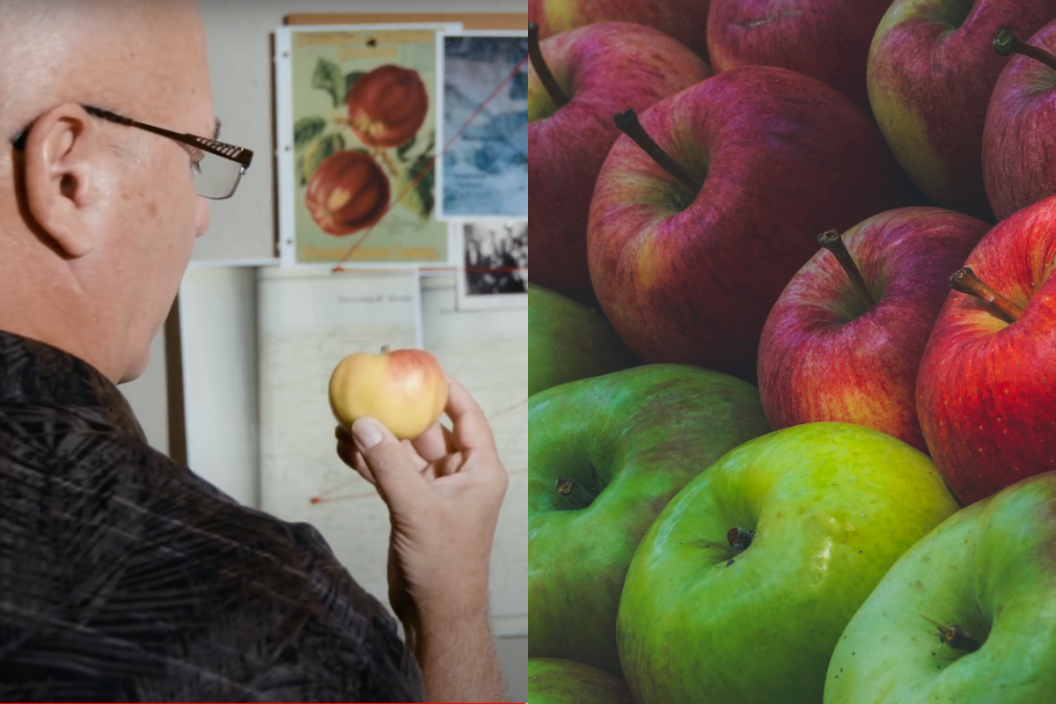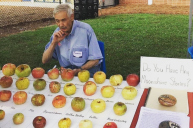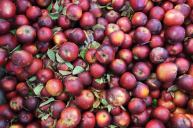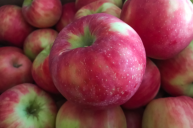The phrase "as American as apple pie" sums up our country's love of this delicious, versatile fruit. At the grocery store or farmer's market, you can choose the best apple to fit your needs, whether you're baking a pie or having a healthy snack. However, there used to be far more apple varieties to choose from, at least 17,000 different kinds in North America. Heritage apple expert David Benscoter is on a quest to save as many apples from extinction as possible.
Videos by Wide Open Country
From FBI Agent to Savior of Apples
Before his heritage apple picking days, Benscoter was an investigator for the FBI and IRS, and these detective skills serve him well in discovering old apples that were left behind in the 20th century. When Benscoter discovered the history of heritage apples where he lived, he was immediately intrigued.
"I started reading a lot of old newspaper articles (online) and learned the area where I lived had a huge, forgotten history of apple growing. Then one day I was reading about apples entered in a nearby county fair and realized lost apples were grown here in the late 1800's and early 1900's."
Along with E.J. Brandt, he's also the founder of the Lost Apple Project, an organization that scours old orchards in the Pacific Northwest in search of old varieties. Since his organization was founded, they've discovered 29 lost apple varieties, such as the Nero, Sary Sinap and the Streaked Pippin.
What Are Heritage Apples?
In a nutshell, heritage apples are the old apple varieties that have been grown for centuries and are at risk of being lost forever. In the modern day, there are only about 4,500 apple varieties grown, a far cry from the 17,000 kinds of apples that existed in the past.
In the early 1800s, the Shenandoah Valley in Appalachia was the top apple growing region, and Appalachian growers created many apple varieties. One, the Taliferro, was declared by Thomas Jefferson to be the greatest cider apple in the world.
However, heritage apple trees can be found in heritage orchards across the country, from other parts in the East Coast like Virginia and North Carolina, to the West Coast and the south. Many apple lovers are dedicated to the cause of finding them, like Tom Brown, another heritage apple expert who found a second calling in the world of heritage apples.
These many apples have a much wider range of tastes compared to the apples we are familiar with today, which is part of the appeal of recovering these lost and forgotten fruits.
As Benscoter explains "there is an amazing variance in the way apples taste. That is one of the best things about hunting for lost varieties. I get to taste test every apple I come across. Every variety has some level of sweetness because the homesteaders in the northwest did not plant poor tasting apples."
Where Did They Go?
Despite the wide variety of apples grown in the 19th century and their delicious flavors, farmers stopped growing old varieties for many reasons, causing a large number of heritage varieties to go extinct. By the late 20th century, about 11,000 heirloom apples were gone forever.
As explained by David Benscoter, many varieties were lost during the Industrial Age in the early 20th century, when much of the population moved from rural areas to cities. "People living in cities didn't need to grow a lot of apple varieties...Nursery owners didn't sell many apple varieties because they were unprofitable. We didn't know that 100 years later many of these varieties would be lost."
Restoring Lost Apples
Benscoter describes himself as a "glorified apple picker," explaining that he and the other members of the Lost Apple Project search old homesteads and apple orchards for heritage apple trees, picking the apples and then sending them to apple identification experts.
"As soon as we determine a lost variety has been found two trees are immediately grafted and planted at the Temperate Orchard Conservancy in Oregon so the apple will never be lost again. We also sell grafting wood and newly grafted trees locally to get the tree out to the public again."
Benscoter is hopeful about the future of lost apples, saying "Some people (myself included) see lost apples as lost history of an important time in our nation's development. Others are interested in the forgotten tastes and still others in the possible advances in apple breeding. At least two of the apples we have rediscovered are said to have resistance to some apple diseases."




